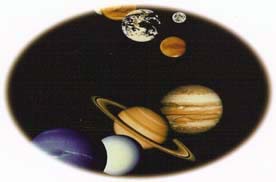This investigation will help you to:
Quarks to Quasars, Bruce Bryson
This is a visual journey consisting of 42 images -- 42 powers of ten. At one end of the journey is the immensity of the known universe, 13.7 billion years old with a radius of at least 12 billion light years (and probably much larger). At the other end of the journey is a depiction of the three quarks within a proton.
University Lowbrow Astronomers: Naked Eye Observer’s Guide, by Dave Snyder; University of Michigan, Ann Arbor
Learn more about how to observe the sky with only the unaided eye. This is a good guide for observations without binoculars or a telescope. The "Star" section explains why you can only see certain stars in the night sky.
Amazing Space, Space Telescope Science Institute
This site contains educational materials and activities about the Hubble Space Telescope (HST).
Astronomy for Kids, Astronomy for Kids
Find out what’s going on in the sky this month. Learn about our planetary neighborhood and the pictures the stars draw in the sky.
Exploration of the Universe (EUD), NASA
Maintained by the Laboratory for High Energy Astrophysics (LHEA) at NASA's Goddard Space Flight Center, the site provides background information about the structure and evolution of the universe.
Recording of a Large Meteor that Exploded on April 23, 2001 Over the Pacific Between California and Hawaii, Acoustical Society of America
This recording was made by the infrasound array in California (in the Anza-Borrego desert) at a range of 1,800 km from the event. The recording has been accelerated 200 times real speed so that the sound can be heard.
Astronomy- Our Place in Space, American Museum of Natural of Natural History
This site succinctly addresses questions relating to the solar system, galaxy, and universe.

